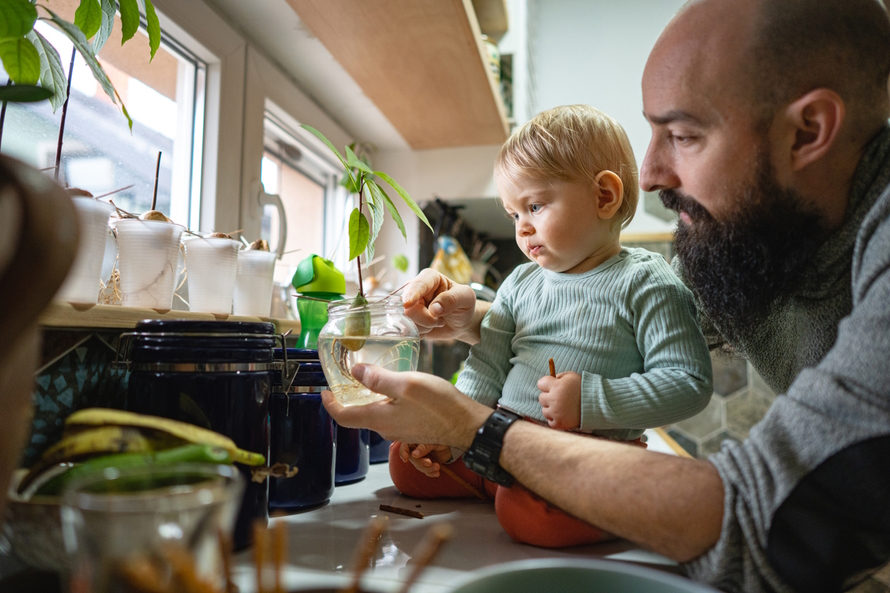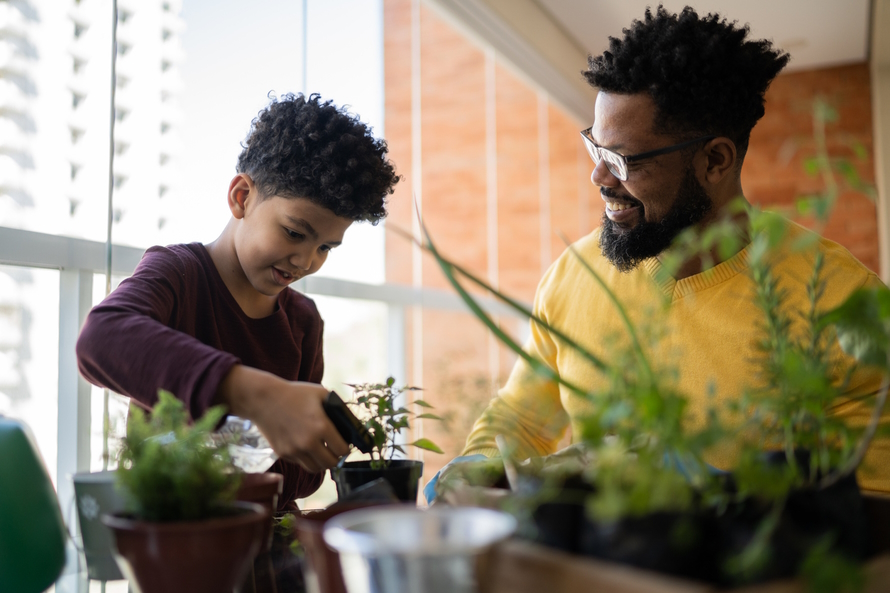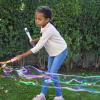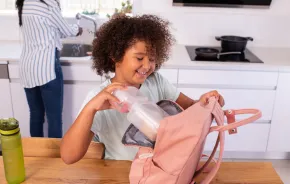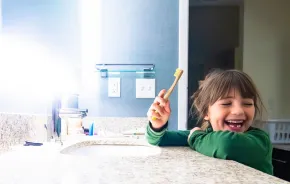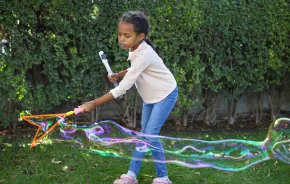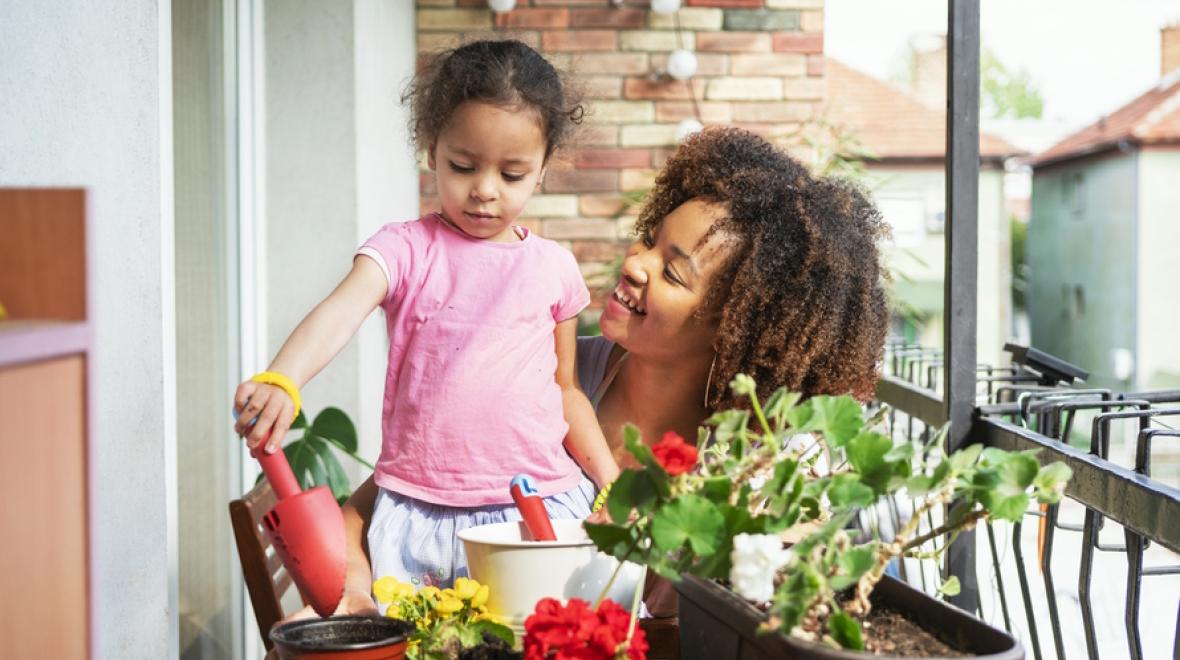
Spring is the perfect time to teach kids about growing things. Even if it's still cold and wet outside, there are plenty of fun things you can grow inside. Try one or more of these plant experiments for fun and learning.
1. Grow beans in a CD case.
Recycle a clear CD jewel case to grow beans and teach kids about the parts of a plant. With the empty case hinge side up, fill about one-third of the case with potting soil. “Plant” a bean concave side down (like the letter “n”) on top of the soil and let the kids water it with a dropper through the hole at the top of the CD case. Stand the “planter” upright in a sunny window where the kids will be able to clearly see the roots reaching down into the soil as the plant grows out of the bean.
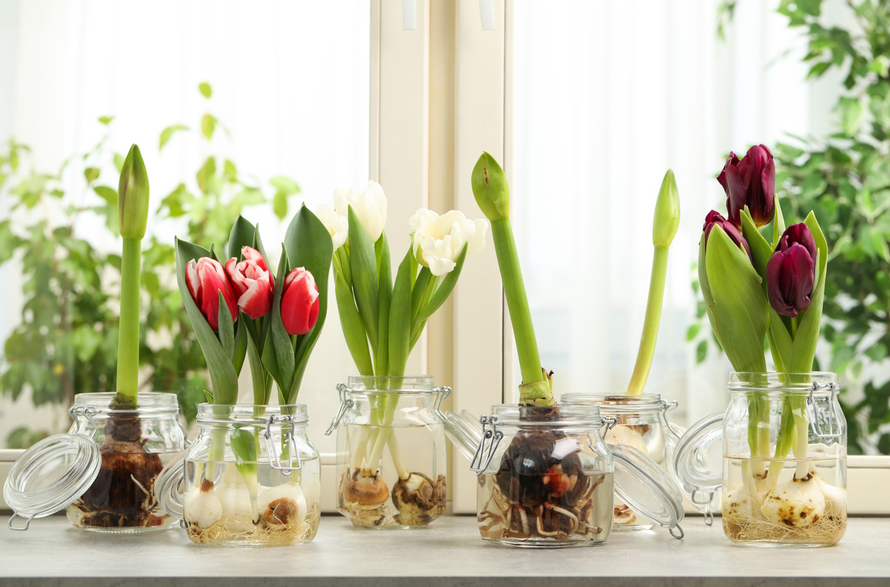
2. Grow flowers from bulbs.
Paperwhites and daffodils are favorite early spring plants, and growing flowers from bulbs is a great science experiment.
Use any see-through container as a vessel (think: plastic cup, clear glass, jar or vase). Add rocks or marbles to the bottom of the container and place the bulb on top, root side down. Fill the container with just enough water to cover the bottom of the bulb. Observe the bulb as it grows roots and eventually a flower. Bonus lesson: Cut open an extra bulb so that kids can see inside this plant powerhouse.
3. Color carnations or celery.
Fill a vase or glass with water and tint the water with food coloring. Add a white carnation or celery stalk and watch the plant become colorful as it “drinks” the tinted water. This is a great short experiment to demonstrate how plants take in water.
4. Root for root vegetables.
Find out how root veggies form underground by planting root vegetables in a clear container. Clear Mason jars are perfect for this, but a clear vase or other container works just as well. First, fill the bottom of the container with pebbles, marbles or gravel for drainage. Next, add potting soil. Plant root vegetable seeds (try carrots, onions, radishes or turnips) with several per jar. Keep the soil moist and enjoy watching the root form. Best of all, when the vegetable is done growing, you can eat it!
5. Recycle a carrot.
Use the end of a carrot from your veggie scraps or buy a whole carrot with the green fronds still attached for this experiment. Cut off the carrot near the plant end, leaving an inch or two of root. (Remember: The root is the edible part of the carrot, so you’ll want to cut your carrot near the wide end, leaving the part where the green leaves attach for growing.) Place several cotton balls on a plate or shallow dish and add water until the cotton is moist. Place the carrot top on the wet cotton, orange side down. Help the kids check it and add water as needed. The green plant will sprout within a few days, but note that it will not produce an edible snack.
6. Study speedy sunflowers.
Sunflower seeds sprout and grow quickly, making this the perfect flower for impatient children (and a classic preschool activity). These seeds can be started just about anywhere, even in a paper coffee cup or yogurt container. Kids love seeing the plant push its way out of the soil, wearing the seed husk like a hat! Transplant your plant to a flower pot after sprouting to observe the flower as it forms.
7. Make a grass basket.
Grass is another seed that grows quickly. Make a living basket by lining a basket in plastic and filling it with potting soil. Scatter grass seeds on top and lightly mist them with water daily. The kids will love using the spray bottle!
Growing plants is a great way to sneak some learning — and a little sunshine — into your daily routine. Try any of these inexpensive garden experiments for a fun project this spring.
Editor’s note: This article was originally published several years ago and was most recently updated in 2023.




